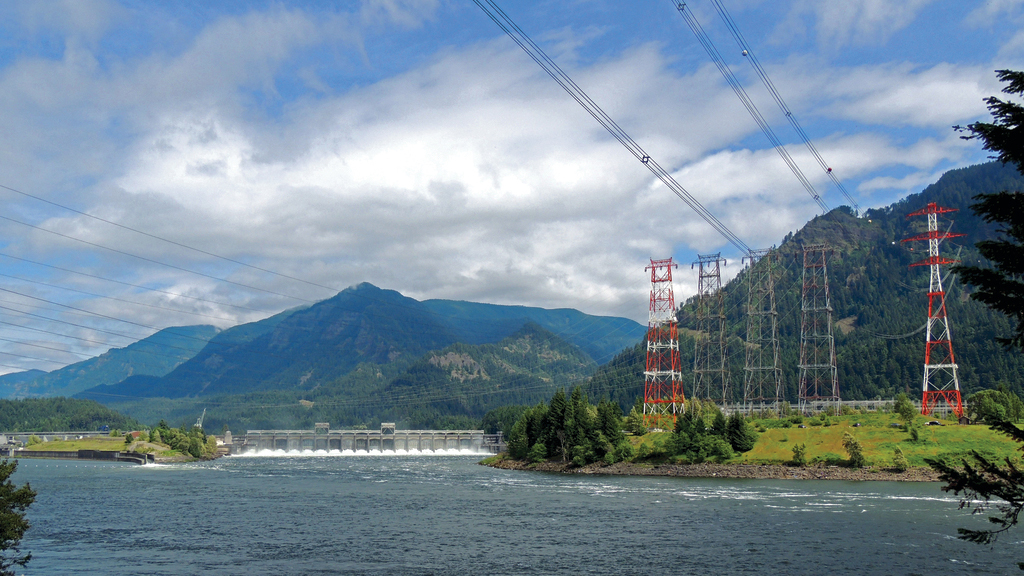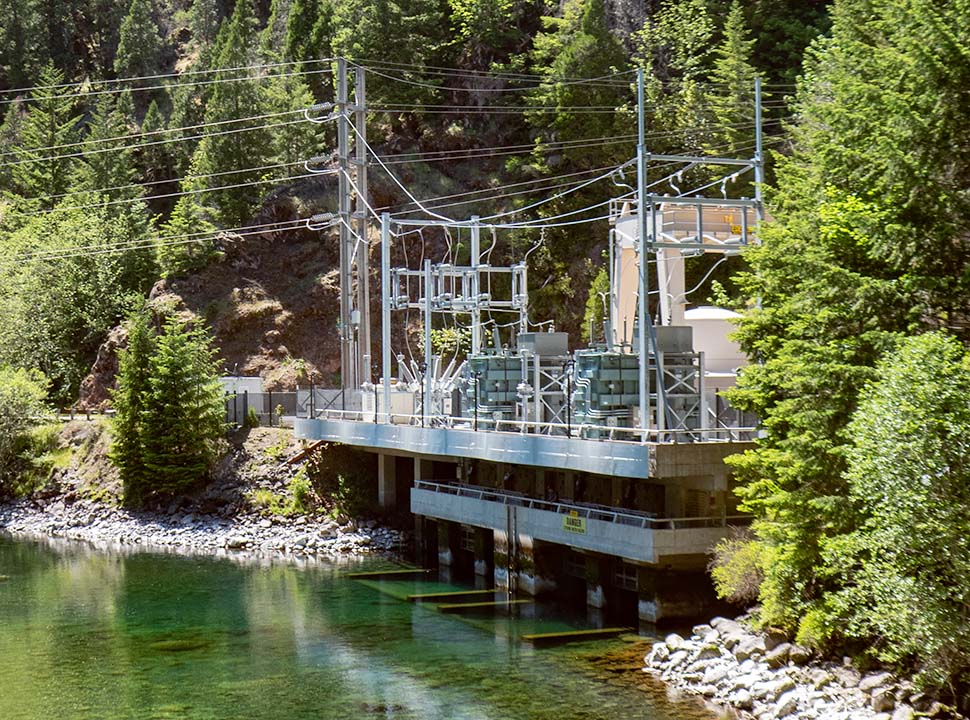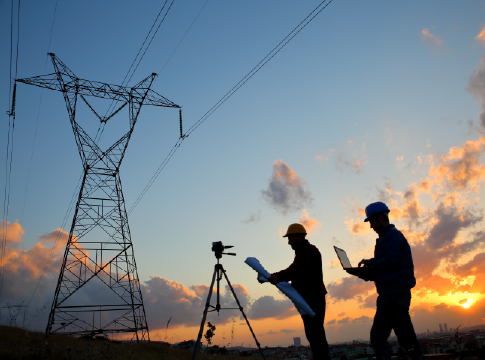Related News
Related News
-
Sustainability Snapshot - Celebrating Energy Efficiency Projects in the Community
Sustainability Snapshops highlight impactful projects completed by EWEB's Customer Solutions department, as a way to celebrate the meaningful work happening behind the scenes.
Find Out More -
EWEB secures $2.5 billion of reliable, affordable, carbon-free energy for customers
The new contract with EWEB’s largest energy supplier, the Bonneville Power Administration, forms the foundation of a diverse energy portfolio.
Find Out More -
Women in STEM: Meet the Hydro Project Engineer Building Habitat for Salmon
EWEB Engineer Associate Val Chang found her way to the McKenzie River from Los Angeles, inspired by heritage trips to the waters of Taiwan and key mentors along the way.
Find Out More -
Public Power Week Poster Contest Winners 2025
The results are in! View the winning posters from EWEB's 2025 Public Power Week Poster Contest.
Find Out More -
EWEB Hometown Heroes compete internationally
Out of 290 teams from 14 different countries, EWEB's Lineman Rodeo team places in the top third of competitors.
Find Out More -
Vote for your favorite Public Power Week Posters
The top five submittals will receive awards. Help us pick the winners.
Find Out More -
Electric Projects underway in North & South Eugene
Underground lines and disaster-resilient power poles are part of EWEB’s infrastructure upgrade near Eugene’s largest natural resource area.
Find Out More -
The Bonneville Power Administration Rate Change and Your EWEB Bill
BPA’s finalized rate increase is smaller than projected, and EWEB’s pass-through adjustment effective October 1, 2025 will now be 2.7% for residential customers—down from the anticipated 4%.
Find Out More -
EWEB completes helicopter installation of salmon habitat features
EWEB adds downed trees and 2,000 tons of gravel to the Uupper McKenzie River below Tamolitch Falls to improve spawning habitat.
Find Out More -
Court rules in favor of EWEB in Carmen-Smith litigation
The U.S. District Court in Eugene has granted EWEB's motion to dismiss a lawsuit brought under the Endangered Species Act pertaining to fish passage at EWEB’s Trail Bridge Dam. The favorable ruling clears the way for EWEB to continue advancing towards implementation of permanent fish passage at the dam.
Find Out More -
EWEB proposes modified plan for permanent fish passage at Trail Bridge Dam
After eight months of extensive collaboration and analysis with scientific experts at two federal regulatory agencies, EWEB is proposing an improved plan to build permanent fish passage facilities at Trail Bridge Dam on the McKenzie River.
Find Out More -
Sustainability Snapshot - Ideal Steel July 2025
Our second Sustainability Snapshop highlights a project where EWEB helped a local industrial warehouse upgrade over 1,000 flourescent lights to new efficient LEDs.
Find Out More -
EWEB prepares for wildfire season with risk mitigation measures
EWEB is building a more resilient electric system to weather various types of disasters, from wildfire to winter storms.
Find Out More -
EWEB, Lane County host open house to gather feedback for “Leaburg Transportation Alternatives Analysis”
“What is the Future of the Leaburg Dam Bridge?” open house exhibit on display at Lloyd Knox Park Visitor Pavilion through July 25
Find Out More -
Improving habitat resiliency throughout the Upper McKenzie
Environmental Responsibility is a core guiding value for EWEB decision-making. This summer, EWEB continues its commitment to environmental stewardship with a robust slate of habitat enhancement updates throughout the upper McKenzie River, across the footprint of the Carmen-Smith Hydroelectric Project.
Find Out More - Show More
EWEB weighs multi-billion-dollar decision affecting energy supply
May 20, 2025 • Aaron Orlowski, EWEB Communications

EWEB is weighing energy supply decisions that will cost nearly $2 billion over the next two decades.
The choice relates to the details of EWEB’s contract with its largest energy supplier, the Bonneville Power Administration, which is a federal agency that sells energy from large dams in the Columbia River basin to customer-owned utilities across the Pacific Northwest.
Approximately 80% of EWEB’s energy today comes from BPA. EWEB needs to sign a new contract with BPA by the end of this year.
BPA is offering several “products” to Northwest utilities, each with differing details on how much energy the federal agency delivers to them, when and at what price. EWEB has spent the last year forecasting energy demand, conducting financial analysis and weighing the social and environmental aspects of each
“This is a choice between good choices,” said EWEB General Manager Frank Lawson. “No matter what product we choose, we’re still getting at-cost BPA and federal system power. That system – dominated by hydroelectricity from the Columbia basin – was built by visionary people in earlier generations and it continues to serve us well today.”
A key issue in the decision is how EWEB will meet demand for electricity when it is highest. Those high-demand days tend to occur on the coldest winter days and hottest summer days. And those extreme peaks are rising. In February, EWEB saw the highest demand for energy in nearly a decade, as low temperatures in the 20s prompted electric heating systems to go into overdrive.
Summer peaks, while lower than EWEB’s winter peaks, are also rising. In July of last year, demand for EWEB electricity nearly broke the record for the highest demand ever during the summer.
“EWEB faces two challenges related to our future supply of energy. One of them is much harder than the other,” said EWEB Chief Energy Resources Officer Brian Booth. “The first challenge – the easier one – is ensuring we have enough energy on typical days, when temperatures are mild and demand for electricity is normal. The second challenge – the harder one – is ensuring we can ramp up electricity generation during the coldest and hottest days of the year when demand spikes.”
EWEB’s analysis narrowed the BPA product options to just two. Of those, EWEB is leaning towards one of the products that will maximize EWEB’s access to BPA’s flexible hydropower resources during those peak events. That product – called “load following” – is pricier than the alternatives. But since EWEB wouldn’t need to acquire additional resources to meet peak needs, the overall cost for EWEB’s energy supply would be slightly lower than the alternatives.
EWEB’s current contract with BPA expires in 2028, but the utility must make a choice on which product to choose by July and then sign the new contract by the end of the year. Ultimately, the contract will last 16 years.
EWEB’s initial leaning focuses on choosing the product with the greatest level of pricing certainty.
EWEB’s analysis and decision-making process on the BPA product builds on years of analysis and choices related to EWEB’s energy supply.
In 2023, EWEB concluded an assessment of power supply options to help the utility develop options for the future. One of the key insights of this integrated resource planning (IRP) process was that BPA should remain the foundation of EWEB’s energy portfolio in the future. But that insight sparked another question: What kind of contract should EWEB sign with BPA?
So EWEB embarked on a new round of analysis specifically focused on the BPA decision. In this analysis, the two products came out nearly tied on the overall cost, but the load following product offered greater certainty because the price for energy to meet peak needs is subject to fewer variables.
EWEB’s analysis found that if EWEB chooses the load following product, its total energy supply costs would be approximately $1.6 million less per year than the next cheapest alternative, a product called “block with shaping.” But EWEB’s analysis also found that block with shaping is more variable and could be much cheaper – or much more expensive – than load following, if future conditions unfold differently.
For example, the study analysis found that the block with shaping product carried approximately $5 million per year more uncertainty compared to load following product. The uncertainty largely resulted from unknown future costs of acquiring non-BPA energy resources to meet peak demand. While that uncertainty could potentially save EWEB money compared to the load following product, it could also cost EWEB more money – especially if EWEB is unable to properly mitigate the risks.
In other words, favorable market conditions or strategic actions on EWEB’s part could prompt the block with shaping product to be cheaper than load following. However, the uncertainty itself was the key driver for EWEB’s initial leaning towards the load following product.
“By maximizing our access to the at-cost portion of the federal hydropower system, we gain greater certainty about where our energy will come from at those peak moments when it’s hardest to ensure we have enough energy to serve our customers,” Lawson said. “If we don’t have to worry about meeting those peak needs because we know BPA will take care of it, then we can focus on other opportunities, such as how we will handle growth, electrification, local resiliency, and developing customer programs.”
Related Programs
EWEB’s Integrated Resource Plan (IRP) will analyze possible energy resource portfolios with a goal of creating useful insights for long-term (20-year) electricity supply planning decisions.




